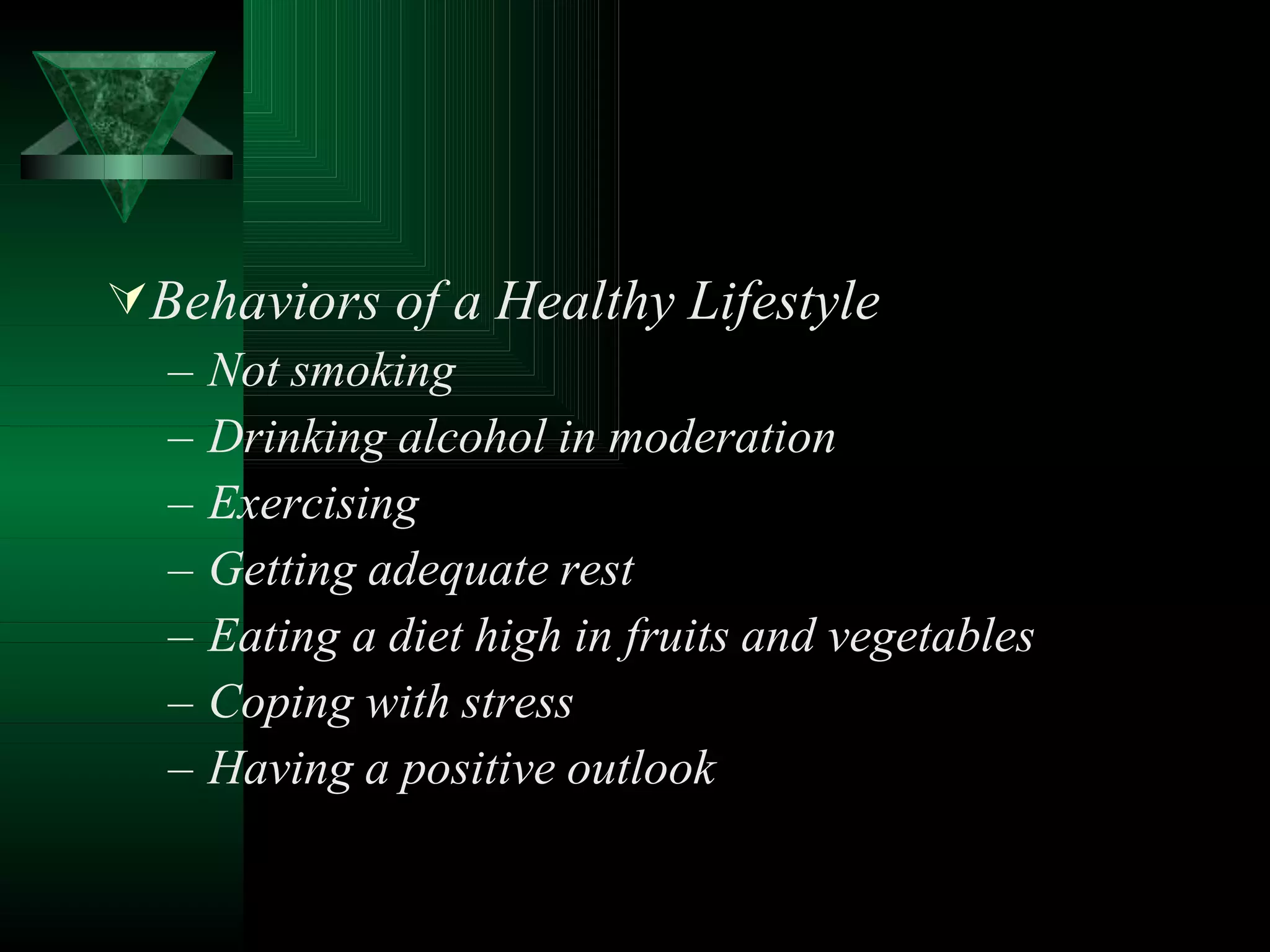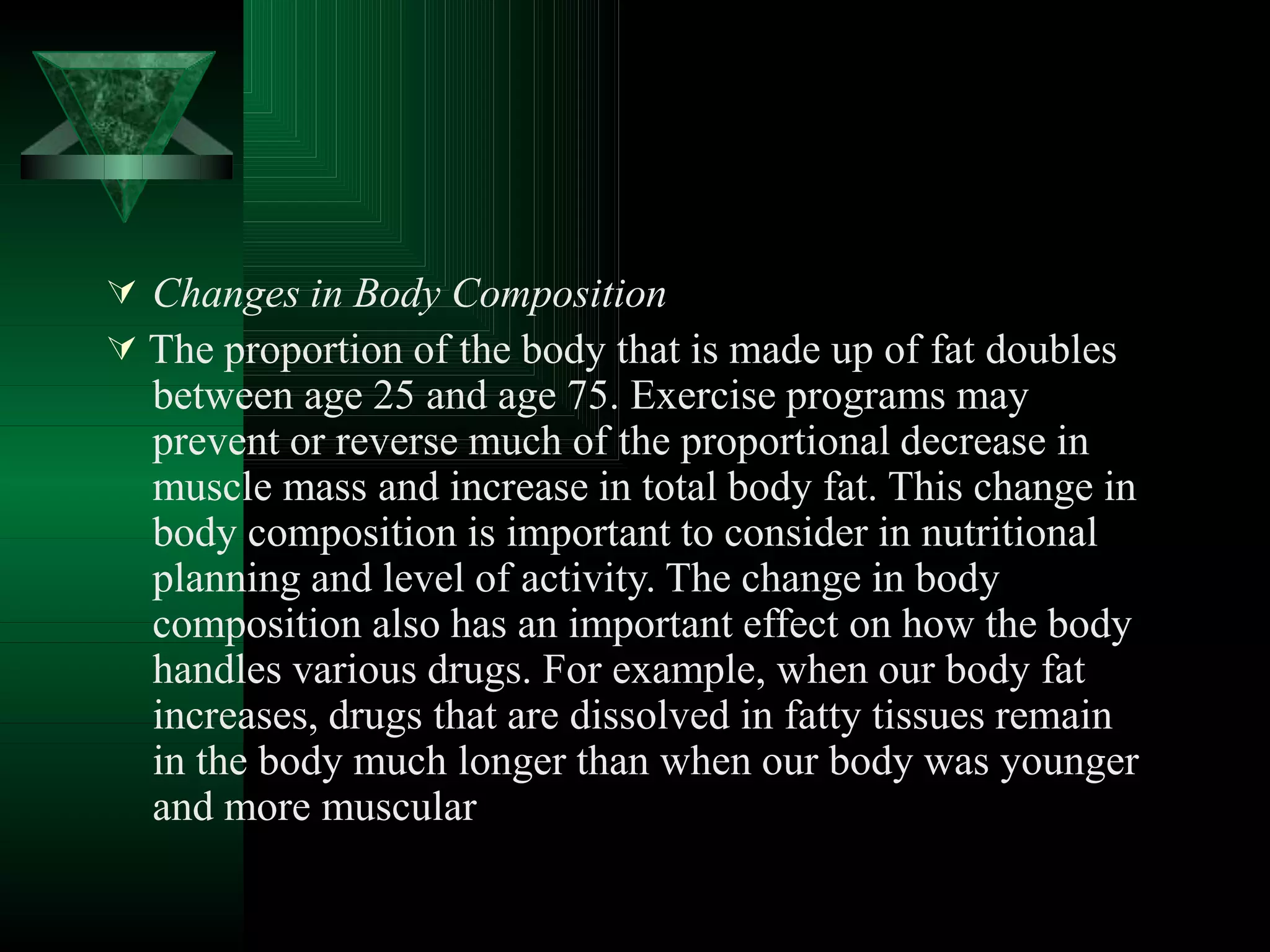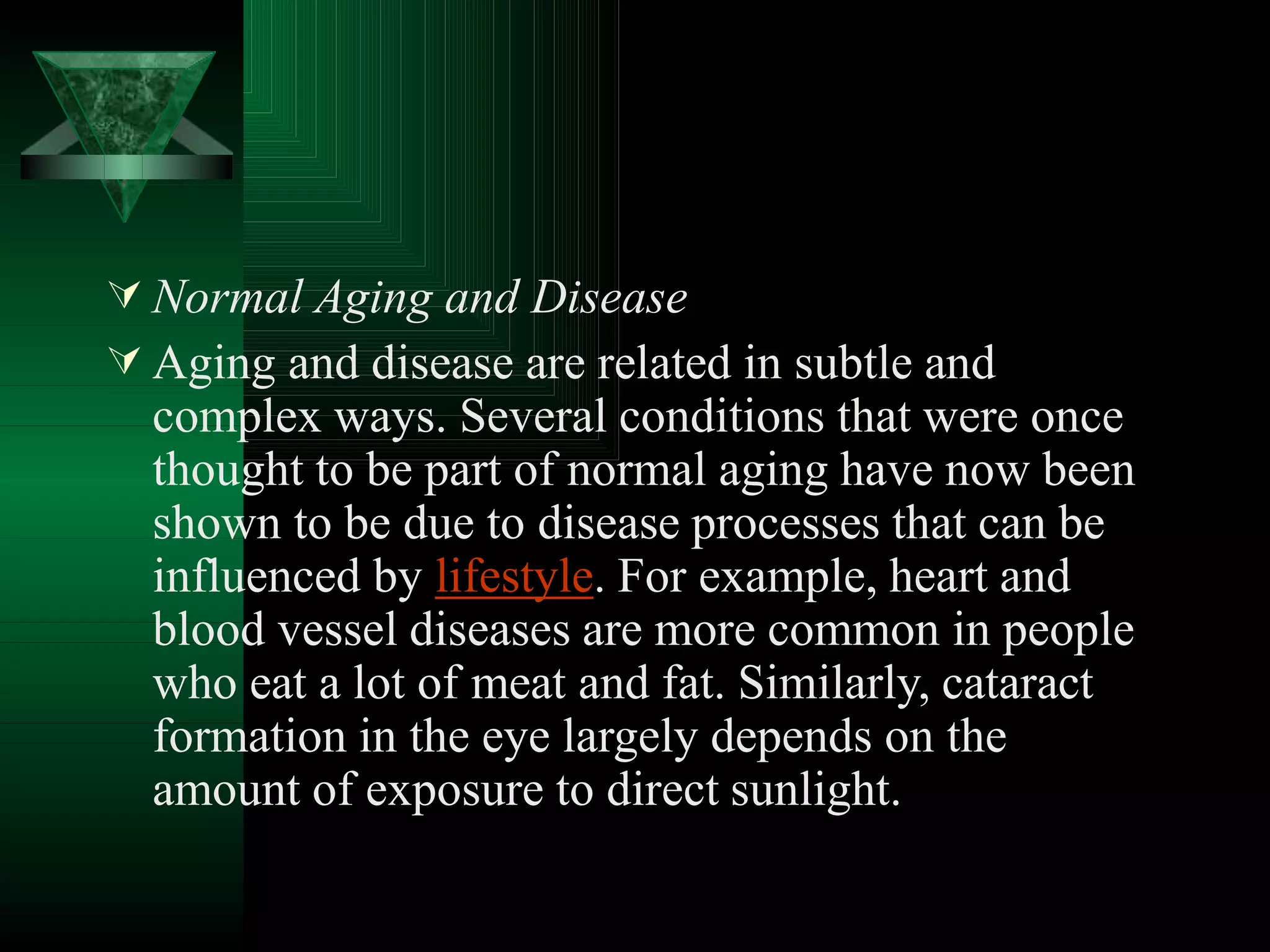The aging process causes changes in both individual cells and organ systems over time through a combination of genetic and environmental factors. As we age, cells multiply more slowly, immune function decreases, and the process of cell death is disrupted. Bodily changes include loss of height from spinal compression, increased body fat and weight until mid-life, and altered drug processing. While some organ function declines gradually, normal aging itself is generally benign, though disease risks increase and individual aging rates vary.



















